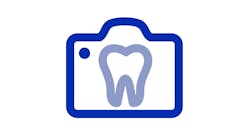Dental practice budgeting basics: How to create and stick to your budget
Imagine standing at a crossroads with your dental practice: one path leads to financial uncertainty with every unexpected expense destabilizing your course, and the other leads to a clear, robust future where challenges are anticipated and every dollar is strategically accounted for.
Success comes from strategically navigating your practice's financial landscape, readying your team, and setting out on a journey toward stability and growth-with each step designed to steer you toward success.
Laying the groundwork for your budget
Before you can achieve your financial goals, you need to determine your starting point and understand the terrain (financial status) you'll navigate. This initial step is crucial for setting a realistic and effective budget. Let's break down how to lay the groundwork for your dental practice's budget, making it an easy and straightforward process.
Begin with a thorough review of your practice's financial statements over the last few years. This review will provide insights into your revenue trends, expense categories, and overall profitability. Here's how to approach it:
- Collect financial statements: Gather income statements, balance sheets, and cash flow statements. Digital accounting software can simplify this step by keeping records easily accessible. Analyze trends: Look for patterns in your revenue and expenses. Are certain times of the year more profitable? Which services generate the most income? Understanding these trends will help you forecast future budgets more accurately. For example, Dr. Aiden found that his pediatric dentistry services saw a spike in revenue during the summer months. He adjusted his budget to allocate more resources to marketing these services in late spring, maximizing profitability.
Revenue streams and expenses
Dental practices typically have multiple sources of income, ranging from routine check-ups to specialized treatments. Classifying these sources can help you predict future earnings.
- Predictable vs. variable income: Distinguish between reliable income (e.g., regular check-ups covered by insurance) and more unpredictable sources (e.g., elective cosmetic procedures).
- Seasonal patterns: Note any services that see increased demand during specific times of the year, as observed by Dr. Aiden.
Knowing the difference between fixed and variable expenses also allows you to identify areas where adjustments can be made to improve financial health.
- Fixed expenses: These costs, such as rent, salaries, and insurance premiums, remain constant and are typically harder to adjust in the short term. These are easier to predict and include costs like rent, insurance, and salaries. List these out and note their regular payment intervals (monthly, quarterly, annually).
- Variable expenses: Costs like dental supplies, utility bills, and marketing expenses can fluctuate and usually offer more flexibility for budget adjustments. Estimate your variable costs, such as dental supplies, utilities, and marketing expenses, based on past consumption and any anticipated changes.
Understanding your expenses is just as important as projecting your income. This involves categorizing your costs into fixed and variable expenses and estimating how much you'll spend in each category.
With a clear picture of your financial status, it's time to set both short-term and long-term financial goals. These goals should be SMART: Specific, Measurable, Achievable, Relevant, and Time-bound.
Goal-setting
Short-term goals are objectives you aim to achieve within the next year. Examples include reducing overhead costs by a certain percentage, improving patient retention, or increasing the average revenue per patient.
Long-term goals focus on the future beyond the next year. Expanding your practice, incorporating new technologies or services, and establishing a retirement plan are common long-term objectives.
Here are some tips for setting achievable goals:
- Align with your vision: Ensure your goals support the overall vision and mission of your dental practice. This alignment motivates you and your team to achieve them.
- Break down goals: Large goals can be overwhelming. Break them into smaller, actionable steps to make them more manageable.
- Review and adjust regularly: As your practice grows and evolves, so too should your goals. Regular reviews allow you to adjust your aims to match your practice's changing needs.
By understanding your practice's current financial position and future goals, you can develop a budget that not only fosters growth, sustainability, and exceptional patient care but also sets the stage for financial success and secures the long-term viability of your practice.
Crafting your initial budget
To craft your dental practice's initial budget, you'll need a detailed examination of your revenue streams and expenses to effectively allocate resources and create a foundational budget that guides your practice toward financial stability and growth.
A comprehensive understanding of where your money comes from and where it goes is essential for effective budgeting. Here's how to approach this:
Projecting your income
Income projection involves estimating how much money your practice will generate over a specific period. This estimation should be based on your analysis of past performance, considering any expected changes in demand, pricing, or services offered.
- Review historical data: Look at your revenue from the past few years to identify trends and patterns.
- Consider external factors: Take into account any factors that could impact your income, such as changes in insurance policies, local economic conditions, or new competitors entering the market. Adjust for growth: If you're planning to introduce new services or expand your practice, include these projections in your income estimates.
Allocating resources wisely
With a clear view of your projected income and detailed expense categories, you can begin to allocate resources in a way that aligns with your practice's goals and priorities.
Prioritizing spending is crucial. Essential expenses are those necessary for day-to-day operations and compliance with health regulations. Nonessential expenses, while they may improve the practice, don't directly impact your ability to provide patient care.
- Essential expenses: Allocate funds to these first. This includes rent, utilities, payroll, and any necessary supplies or equipment maintenance.
- Nonessential expenses: Consider these carefully, especially if your budget is tight. Can any of these costs be reduced without impacting the quality of care?
Part of your budget should also be allocated toward growth opportunities. This could include marketing to attract new patients, investing in new technology to expand services, or professional development for your team. Consider the following:
- Return on investment (ROI): Evaluate each potential investment in terms of its expected ROI. How long will it take for this investment to pay off, and how will it impact your practice's finances?
- Plan for contingencies: Set aside a portion of your budget for unexpected opportunities or challenges. Having a contingency fund allows you to adapt without compromising your financial stability.
Overall, effective budget implementation in your dental practice involves translating strategic planning into daily financial management through expense tracking, cash flow management, and ongoing adjustments.
Tracking and managing expenses
Effective expense tracking is vital to staying on budget. It allows you to see where your money is going and identify any areas where you can cut costs or need to reallocate funds.
Modern financial software can automate much of the tracking process, providing real-time insights into your practice's financial status. Consider investing in dental practice management software that includes financial tracking features-or use standalone accounting software like QuickBooks. You can also set up your software to automatically categorize expenses as they occur, reducing manual entry and preventing errors. Or you can schedule regular sessions to review your financial dashboard. This habit ensures you're always aware of your current financial status.
Cash flow and budget
Maintaining a positive cash flow is critical to your practice's operations. It ensures you have the funds available to cover your expenses, pay your staff, and invest in growth opportunities.
- Monitor accounts receivable: Keep a close eye on outstanding invoices. Consider implementing more efficient billing practices or offering payment incentives to encourage timely patient payments.
- Plan for seasonal fluctuations: If your practice experiences seasonal variations in income, ensure you have sufficient reserves to cover slower months.
A budget is a living document that should evolve as your practice grows and changes. Regularly reviewing and adjusting your budget ensures it remains aligned with your practice's goals and financial reality. Changes in the economy, the competitive landscape, or your practice's operations can all signal the need for a budget adjustment.
Key indicators might include consistently underperforming revenue, higher-than-expected expenses, or opportunities for investment that weren't previously considered. When you notice these indicators, don't wait for the situation to resolve itself. Review your budget and make necessary adjustments.
Involving your team
Your staff plays a crucial role in implementing your budget; they are on the front lines of your practice, where many of your expenses originate.
- Communicate changes: When adjustments are made, communicate the reasons and the expected outcomes to your team. This helps ensure everyone is working toward the same financial goals.
- Empower your team: Provide training or resources your staff needs to contribute effectively to budget management. For instance, if reducing supply costs is a goal, ensure they understand how to evaluate suppliers or choose cost-effective alternatives.
Your budget aims to strategically allocate funds to achieve financial stability, sustainable growth, and excellent patient care in your practice.
Final tips for success
The real challenge-and opportunity-lies in adhering to this budget and leveraging it for your practice's growth and sustainability. This section delves into practical tips and strategies that can help ensure your budgeting efforts are successful, turning financial planning from a daunting task into a powerful tool for achieving your practice's goals.
- Stay disciplined and build a financially disciplined team.
- Automate financial processes.
- Conduct regular financial reviews.
- Ensure your team understands the basics of your practice's financial goals and how their actions impact the overall budget.
- Incentivize cost-saving measures.
- Consider offering incentives for ideas that lead to cost savings or for departments that consistently stay under budget without compromising patient care.
- Share examples of how cost-saving measures have positively impacted the practice, whether it's through staff newsletters, meetings, or a bulletin board.
You may also want to consult with a financial advisor; they can offer invaluable insights into tax strategies, investment opportunities, and ways to optimize your financial health.
Conclusion
Budgeting transcends simple number crunching by integrating every facet of your dental practice, from meticulous expense tracking and goal setting to adjusting strategies alongside growth and consulting experts, all to ensure financial stability and success. By diligently applying these principles, your practice not only achieves financial goals and provides exceptional patient care but also contributes to a healthier community, making every dollar an investment into a thriving future.









